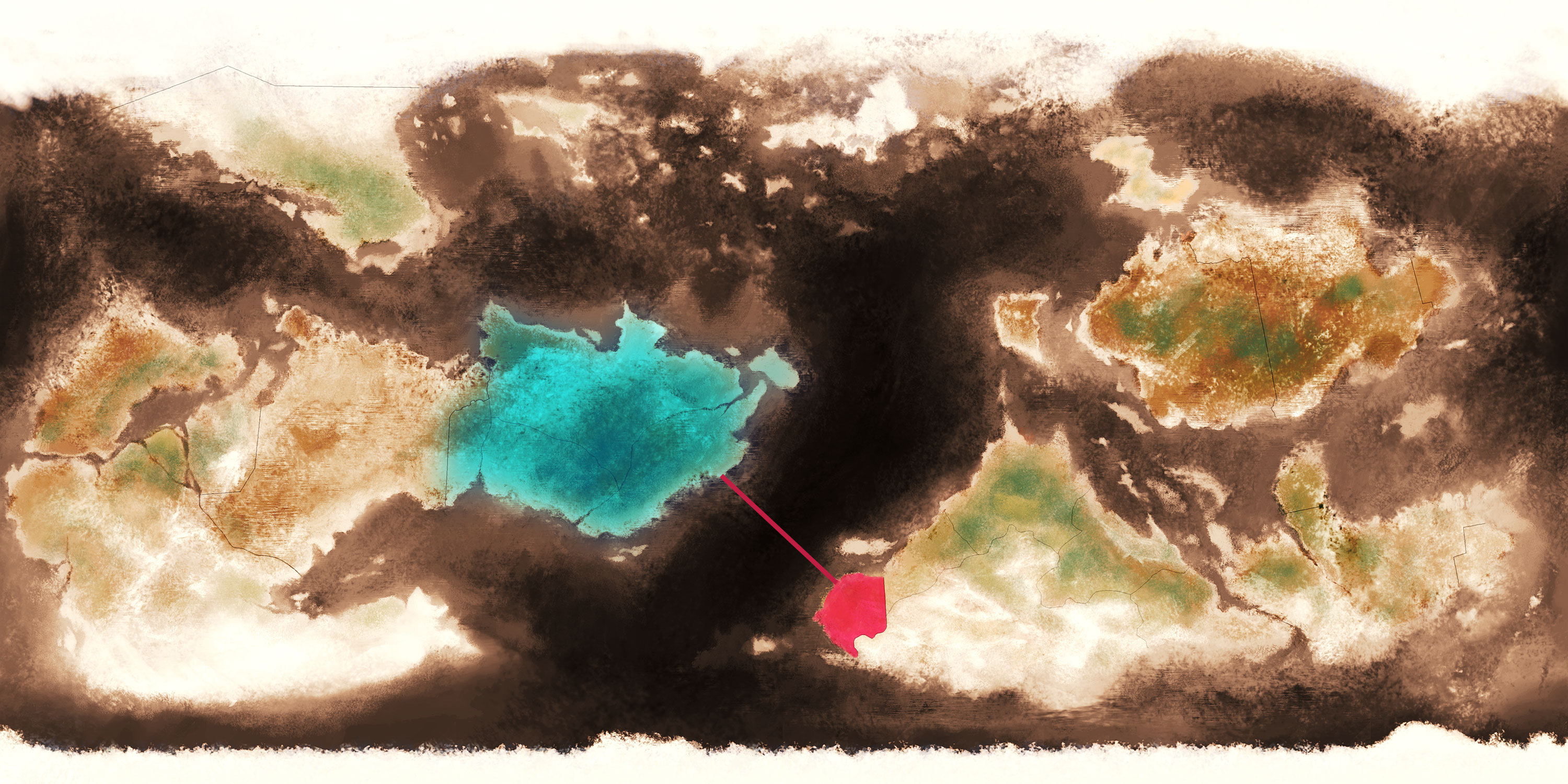This article spoils the game I’ve reviewed here.
Miscalculations
I’ll discuss only the path in which Winter follows Cyrus. I also have to point out some assumptions I’ve made before the actual calculations:
- The Sule is similar to the Earth. Be it size, atmosphere or chemical composition of soil;
- The bomb exploded somewhere over Gabrea;
- Both the capital of Brighton and the city over which the nuke exploded are as close as possible;
- Accuracy of the map is reasonable.

The map is 3000 pixels wide which makes one pixel represent about 13.35km. The reddish line is pixels long, therefore distance between the countries in question turns out to be kilometres.
Shock wave
The citizens of Brighton could observe the blinding explosion just milliseconds after the event. Between the explosion visuals and a sound effect, which supposedly meant the arrival of shock wave, there was just a few lines of dialogue I’d give at most a minute to act out. Too bad the shock wave needs whole minutes1 to travel all the way from Gabrea to Brighton, therefore in the game shock wave comes at least 8.7 times faster than it should. A small mistake, oops.
In further calculations I’ll assume that whole 8.7 minutes have already passed after the explosion when the shock wave sound effect has played.
Sickness
Shock wave is followed by Cyrus’ explanation about how dire the situation actually is after which they finally teleport out. Given length of the explanation I rate it at (at most) 5 minutes. Teleportation, as can be seen earlier in game, takes only 5 seconds to complete, which puts Winter at exactly seconds of exposure to γ radiation.
826 seconds only and strictly only if there was any noticeable change in background radiation in the first place! The strength of radiation is inversely proportional to the distance from the explosion centre2, thus even at relatively short distances from the explosion centre the radiation decreases to negligible levels. For comparison one cannot even measure the change of radiation background 200 kilometres away from the explosion of 20Mt nuke34.
Looking at the effects table to experience the same symptoms Winter had (vomiting and diarrhoea to be exact), her body had to absorb from 2 to 6 grays of ionising radiation. Given 826 seconds of exposure the dose rate had to be anything between and . I’m not sure I need to point out I’m having a hard time thinking up specifications of a bomb which would induce such strong radiation 4168 kilometres away from it’s explosion location and not break the Sule apart.
Amendments
Discussion at Dischan forums5 pointed out that all my calculations are completely dependent on the first assumption. Indeed they are, so I’ll write how I came to conclusion this assumption is safe enough to be depended on. If the Sule is bigger than the Earth, the story of irradiation is even more unlikely as the distance between Gabrea and Brighton is even larger. On the other hand the planet can’t get much smaller (or more accurately, easier6) and still be capable of having an atmosphere.
CombatPlayer pointed out that the game could be set in a different universe following different physics altogether. Indeed, that also could be a case, but I highly doubt it’s reasonable thing to do. Of course I won’t stop anybody trying to create new rules for fictional universe, but it would involve long years of hard work to make everything at least a bit realistic. That would include ensuring new rules allow creation of stars, planets, stable chemical elements. After that ensuring those elements would be able to participate in a process of creating other highly complex elements we call organic matter and so on and on.
Final words
Even though there certainly were some small mistakes in the story, those mistakes didn’t prevent me from having fun playing this game. What actually saddens me is how people are still afraid of nuclear as if it was the most fearful thing conceived by our hard-working scientists. It’s not in the scope of this article though.
Speed of the sound in earth crust; I took 8 here.↩︎
The bomb used in game clearly was much stronger, but regardless of that, it’s explosion strength (however strong it was) still pales in comparison to various laws, that don’t favour game’s scenario.↩︎
Originally linked to http://dischan.org/forum/viewforum.php?c=1&f=12&t=1746, but forums were removed at some point.↩︎
In order for body to have it’s own atmosphere body’s gravitation should be large enough so it could hold down gases of which atmosphere consists. Gravitation is proportional to the mass of the body rather than size. Assumption #1, however, includes similar density to Earth, thus I can use size and mass in such comparisons interchangeably.↩︎